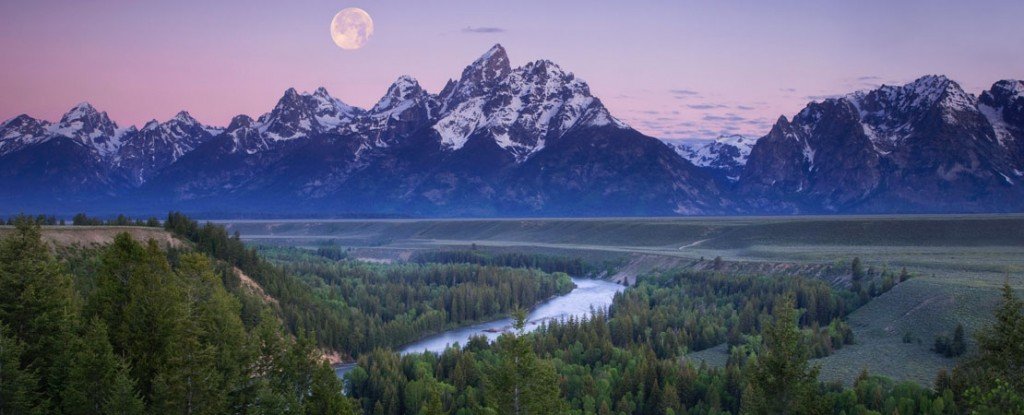Grand Teton National Park: The park that almost wasn’t

In addition to seeing amazing wildlife and stunning views, one of the things our guests always comment on about our scenic float trips is how much they learn from our guides about the history, geology and botany of the Park. So we thought we’d spend some time in our next few blog posts sharing a little about those things. Today it’s history.
We are incredibly lucky to have Grand Teton National Park. The formation of the park was one of the longest, most bitterly fought of all American conservation battles. It took 50 years and three separate governmental acts (holy cow!) whereas Yellowstone (the nation’s and the world’s first national park) took only two years from idea to reality.
The early years of Grand Teton National Park
As early as 1897, several proposals suggested expanding Yellowstone’s boundaries southward to encompass portions of northern Jackson Hole and protect migrating elk herds as well as including the Teton Range and northern Jackson Hole. Neither the Department of the Interior nor Congress acted on these early proposals. A small version of today’s park was eventually established in 1929, protecting the major peaks of the Teton Range and six glacial lakes at the base of the mountains. But much of the valley of Jackson Hole remained in private ownership so conservationists decided to seek private funds to purchase land in the Jackson Hole valley.
Enter John D. Rockefeller, Jr. who, in the 1930s after several visits to Wyoming and falling in love with the area, purchased more than 35,000 acres at a cost of 1.4 million with the intention of donating them for national park designation. But according to the National Park Service, “What seemed like a simple and clear-cut plan developed instead into 20 years of bitter struggle, nearly tearing apart the Jackson Hole community. Intense hostility surrounded land acquisitions, and attempts by Rockefeller to gift the properties to the National Park Service met with strong resistance.”
In 1943 Rockefeller became discouraged and impatient that his purchased property might never be added to the park. He wrote a letter to President Franklin Delano Roosevelt threatening to sell it. This threat persuaded FDR to use his presidential power to proclaim 221,000 acres as a Jackson Hole National Monument. But this was seen by many as a blatant violation of states’ rights. Others believed the Monument would destroy their local economy and rob their county tax base. Members of Congress repeatedly attempted to have the new National Monument abolished.
A new National Park is born
Eventually locals came around. The establishment of a ‘new’ Grand Teton National Park finally occurred September 14, 1950, when President Harry S. Truman signed a bill merging the 1929 Park with the 1943 Monument to form a single enlarged 310,000-acre unit.
A thumbnail history of the park was written in honor of the park’s fiftieth anniversary in 2000 and that’s where most of the following information comes from. If you want more details you can read it here: The Creation of Grand Teton National Park.
Today Grand Teton National Park is an almost pristine ecosystem and is home to the greatest variety of wildlife in the 48 contiguous states. We salute those early conservationists and are extraordinarily grateful for their vision and perseverance. We feel very privileged to live and work here and to be able to share it with you and hope you will treasure it as much as we do.
